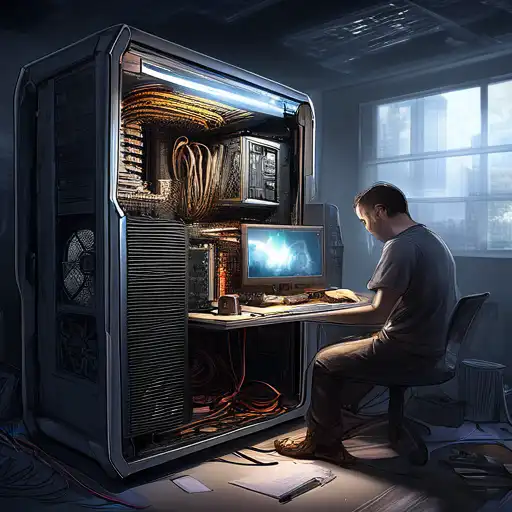Introduction to PC Building
Building your own PC can be a rewarding experience, offering both personal satisfaction and the opportunity to create a machine that perfectly fits your needs. Whether you're a gamer, a creative professional, or just someone who wants to understand how computers work, this guide will walk you through the process step by step.
Why Build Your Own PC?
Building your own PC allows you to customize every component to your specific requirements, often resulting in better performance and value than pre-built options. Plus, it's a great way to learn about computer hardware.
Essential Components for Your PC
Before you start, you'll need to gather all the necessary components. Here's a list of the essential parts:
- Processor (CPU)
- Motherboard
- Memory (RAM)
- Storage (SSD or HDD)
- Power Supply (PSU)
- Case
- Graphics Card (GPU) - if not integrated into the CPU
Choosing the Right Parts
Selecting compatible components is crucial. Research each part to ensure they work well together and meet your performance needs. Consider visiting forums or using online tools like PC Part Picker for compatibility checks.
Step-by-Step Assembly Guide
Now that you have all your parts, it's time to start building. Follow these steps to assemble your PC:
- Prepare your workspace with a clean, static-free surface.
- Install the CPU onto the motherboard carefully, aligning the pins correctly.
- Attach the CPU cooler according to the manufacturer's instructions.
- Insert the RAM into the appropriate slots on the motherboard.
- Mount the motherboard inside the case, securing it with screws.
- Install the power supply, connecting it to the motherboard and other components as needed.
- Add your storage devices and connect them to the motherboard and power supply.
- If you're using a dedicated GPU, insert it into the PCIe slot on the motherboard.
- Connect all necessary cables, including those for power, data, and case fans.
- Finally, close up the case and connect your monitor, keyboard, and mouse.
Installing the Operating System
With your PC assembled, the next step is to install an operating system (OS). You can choose between Windows, Linux, or macOS (if building a Hackintosh). Ensure you have a bootable USB drive with the OS installer ready.
Tips for First-Time Builders
Building a PC for the first time can be daunting, but here are some tips to help you through the process:
- Take your time and don't rush the assembly.
- Refer to the manuals that come with your components for specific instructions.
- Keep track of all screws and small parts to avoid losing them.
- Consider watching tutorial videos for visual guidance.
Testing and Troubleshooting
After assembly, power on your PC to test all components. If something doesn't work, double-check connections and consult troubleshooting guides online. Remember, patience is key.
Conclusion
Building your own PC is an exciting project that can save you money and give you a deeper understanding of how computers work. With the right preparation and care, anyone can assemble their own custom PC. Happy building!
